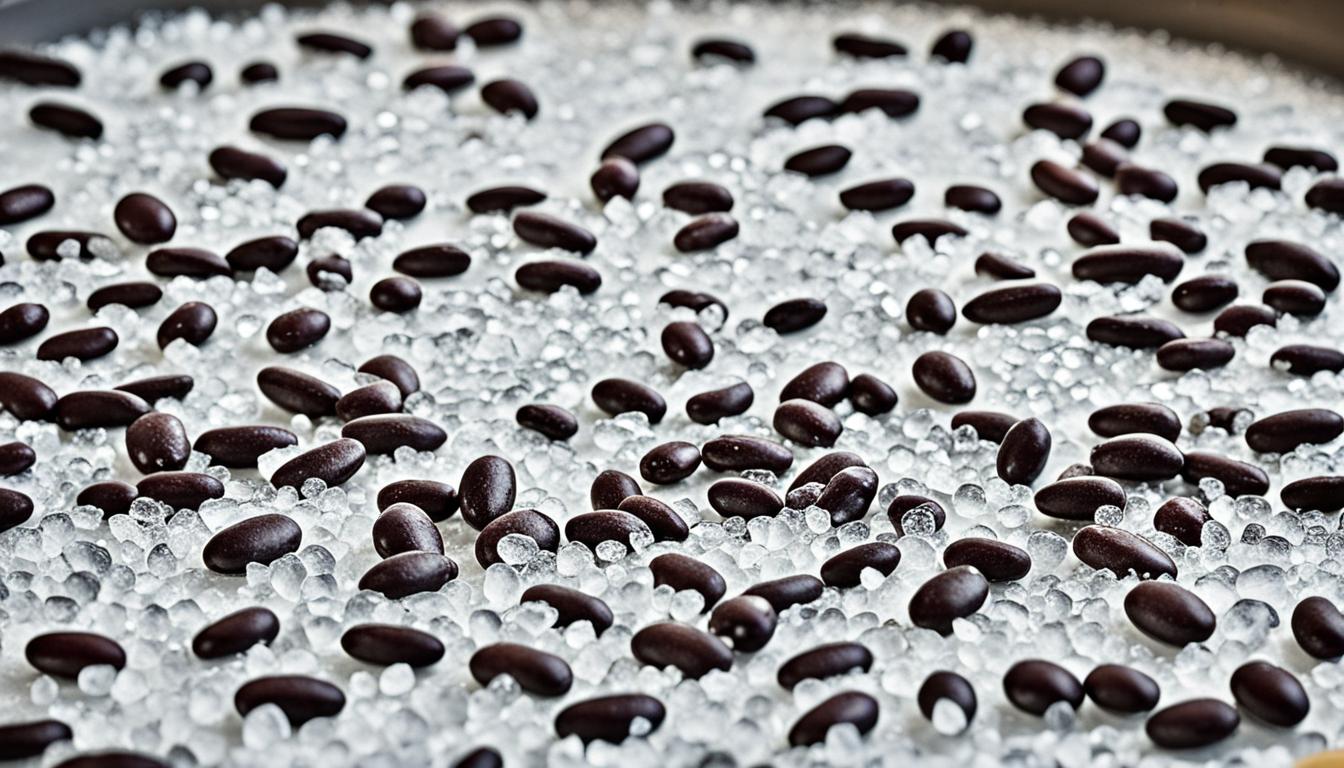Have you ever wondered if adding salt to the soaking water when cooking beans is a good idea? Does it really make a difference in the taste and texture of the beans, or is it just a myth? Today, we are going to reveal the truth behind this age-old debate and provide you with the answer you’ve been searching for.
So, is adding salt to the soaking water good or bad for cooking beans? Let’s find out.
Benefits of Soaking Beans
Soaking beans before cooking offers numerous benefits that can greatly enhance the taste and quality of your dishes. Let’s explore some of the key advantages:
1. Reduced Cooking Time
By soaking beans, you can significantly reduce the cooking time, making them easier and quicker to prepare. This is particularly beneficial for busy individuals or those who want to enjoy a delicious bean-based meal without spending too much time in the kitchen.
2. Improved Digestibility
Soaking helps remove complex sugars present in beans that can cause digestive issues for some individuals. This process helps break down these sugars, making the beans more digestible and reducing the likelihood of bloating or discomfort after consumption.
3. Enhanced Flavor and Texture
Soaking beans plays a vital role in improving their flavor and texture. When you soak beans, they absorb the flavors of any seasonings or spices added to the soaking water, resulting in beans that are more flavorful and aromatic. Additionally, the soaking process allows the beans to cook more evenly and develop a creamier, velvety texture that is highly desirable.
4. Increased Nutritional Value
Soaking beans before cooking can enhance their overall nutritional value. Soaking helps activate enzymes in the beans, making important nutrients more accessible and easier to absorb during digestion. This includes nutrients such as protein, dietary fiber, vitamins, and minerals that are essential for a healthy diet.
5. Versatility in Preparation Methods
Soaking beans opens up various cooking methods and recipes. Soaked beans can be easily used in stews, soups, salads, dips, and other culinary creations. With soaked beans, you have the flexibility to experiment with different flavors and cuisines while enjoying the benefits mentioned above.
In conclusion, soaking beans before cooking is an indispensable step that offers a range of benefits. From reducing cooking time to enhancing digestibility, flavor, texture, and nutritional value, soaking beans ensures that your dishes are not only delicious but also easier on your digestive system. So next time you decide to cook beans, remember the importance of soaking to unlock their full potential!
Effect of Soaking on Bean Texture and Salt Content
When it comes to cooking beans, the way you soak them can have a significant impact on their texture and flavor. One crucial aspect to consider is the salt content in the soaking water. Soaking beans in salted water has been found to improve the texture of the cooked beans, resulting in a more tender and creamy experience. The salt helps to soften the tough outer skins of the beans, ensuring that they cook evenly without bursting.
In contrast, beans soaked in unsalted water can have a tougher texture and are more likely to burst out of their skins during cooking. Soaking beans in salted water not only enhances the texture but also allows them to absorb some of the salt, resulting in beans that are seasoned throughout. It’s worth noting that while soaking with salt can increase the salt content in the beans, additional seasoning is still necessary during the cooking process to ensure the desired flavor.
To achieve the best results, we recommend starting with one tablespoon of salt per quart of water for both soaking and cooking the beans. This ratio provides a good balance of saltiness without overpowering the natural flavors. However, the amount of salt can be adjusted according to personal preference.
So, if you want beans that are tender, creamy, and bursting with flavor, consider soaking them in salted water. It’s a simple step that can make a noticeable difference in the final outcome of your dish. Give it a try and savor the delicious results!
